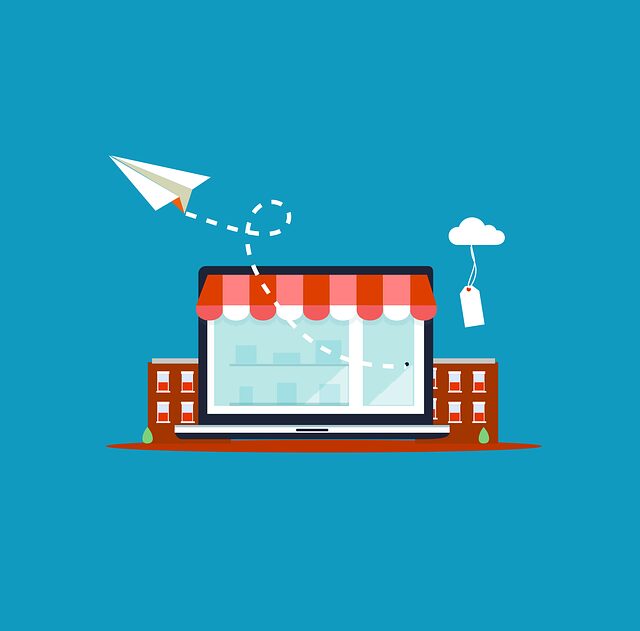
With the ecommerce industry booming, it can be tempting to commit early and cash in on the potential benefits. Ecommerce is predicted to be almost a quarter of all global retail sales by 2023. This can get your company a valuable boost upfront, but may not endure in the long run. In order to maintain your success with ecommerce growth, you need to have sustainability in mind from the beginning. Luckily, the actual steps to achieve this aren’t too complicated once you understand what you’re doing. If you follow this guide closely, you can easily secure sustainable success for your company.
Table of Contents
Critical Points
Critical points are what we call the essential items for lasting success in your ecommerce growth. These are the important ones to remember:
Commit to a Single Competitive Advantage
As the old saying goes, “jack of all trades, master of none.” If you try to accomplish too much with your business, you inevitably spread yourself thin. People don’t want hundreds of mediocre features other brands already have. They want the best of something. Figure out what you want your company to be the best at, and commit to it.
Value Your Reputation
Reputation, especially on social media, can make or break your company. If you get canceled, you can consider your ecommerce growth dead in the water. The best way to grow your reputation is with authenticity. You can achieve that with your brand tone, informative posts, and better customer service.
Tell a Great Story
We live in the golden age of content. People love stories and they expect them to be everywhere. Part of that is your products, but the most important factor is your company. Let people familiarize themselves with your company’s journey. They’ll become significantly more invested in your brand.
Elaborate on the Founders or Problems
Telling a story is great, but you need credibility or emotional resonance to truly get the point across for your ecommerce growth. You address this by showing the founders’ expertise or knowledge in the product, or the problems people struggle with that your product addresses.
Opportunities for New Ventures

The market is experiencing an unprecedented period of fragmentation. There are niche opportunities everywhere if you look hard enough. Finding that niche for your company is key to sustainable growth. A large part of this is the internet itself. With a platform that lets you reach almost everyone with little to no effort, you can pick up a unique audience like never before. Tap into your social channels to start discovering your niche in the market.
If you’re worried about seeming too impersonal, don’t worry. Almost half of global shoppers research products through social networks now. It’s a vital tool for sustainable ecommerce growth.
Sustainability Core Points

There are a few factors for sustainability that should inform the rest of your decision-making while you expand. The first is to make sure that your market niche has room for scaling. If you find a great niche that caps out too quickly, it can hinder your company in the long run. Part of this is being creative and having ideas of where to take your business in the future. Another core tenet is product diversity, particularly for supply. Should you ever run short of a product, you should have another in the same field that you can offer consumers.
Common Mistakes
There are a few common mistakes companies make during their DTC ecommerce growth.
Copying Established Businesses
Copying a successful business can seem like a shortcut to success, but you won’t truly carve out a market niche if you do. If you do copy, always have some kind of change that can offer something new to customers. You want to try new things and don’t overinvest in something others are already doing.
Expanding Too Quickly
It can be tempting to rush your growth as you start to see success, but it’s very uncommon for a business to gain a massive following in a short time. You want your ecommerce growth to be moderate and steady to have the most control.
Differences From B2B
Many companies try to approach their DTC business the same way they would a B2B, but that can fail for a number of reasons.
Poor Customer Service
Customer service is often handled as a next-man-up routine as companies try and pick up DTC efforts. In other words, there’s no real customer service team and customers are left lost when they reach out for help. DTC efforts rise and fall quickly with customer service. You want to be sure to invest in yours.
Consistent Content

The inefficiency of B2B for ecommerce growth often applies as well. As a DTC business, you want to constantly create and distribute content for a more personal relationship with customers. Make sure to emphasize photos and videos. Those are the media types people connect the most with.
Security
Security is invaluable for a DTC business because they often lack the robust infrastructure B2B businesses have. But, many people forgo it thinking it isn’t important. For your DTC business, invest in security as soon as possible. If anything ever compromises the integrity of your company, it can spell the end of your ecommerce growth.
Key Software Components
As a burgeoning DTC ecommerce business, you want your software to be robust. The ideal central ecommerce platform integrates accounting, fulfillment, and customer service software solutions. More importantly, choose modern software. Many companies opt for older software because it’s cheaper and more easily accessible. However, those tools have a higher risk of failing and being breached. You would be surprised how much old code is held together with duct tape. Pick something new and capable.
Open SaaS Software
Our recommendation of software for your ecommerce growth is an open SaaS software like BigCommerce. It gives you the most well-rounded functionality. You have the flexibility to create unique online experiences and the ability to integrate with existing back-office systems at a low cost.
If you decide to go with a different platform, that’s fine as long as you do your research. Not all software will be ideal for your DTC channel.
As a side note, consider your omni strategy. Listing products on Amazon, Walmart, Google, and Instagram in addition to your site gives you more exposure and chances to be recommended to customers by those platforms. Amazon is the leading mobile online shopping app, so it’s wise to take advantage.
Things to Keep in Mind
While they shouldn’t be at the top of your priority for ecommerce growth, there are still some important factors to keep in mind as you get started.
Costs
Your budget is always something to keep a close eye on. Make sure to invest properly without going overboard.
Marketing
You want people to know your brand, but you don’t want to inflict “marketing fatigue.” Keep your efforts consistent but vary them slightly.
Customer Retention
If you spend so much time trying to bring in new customers that you lose old ones, then you’ve effectively failed.
Know Buying Habits
People often end up spending more than they plan when entering a store. Make sure to suggest plenty of products for customers to consider before checking out.
Be Flexible
Your ecommerce growth is not going to be consistent or predictable. You have to be ready to adjust when new challenges arise.
Future Trends

Ecommerce is a constantly shifting industry that’s due for even more changes as time goes on. For instance, many companies will rely on only Amazon for their Omni-marketing strategy, when Google’s marketplace is expanding rapidly. In fact, most B2B companies will see a shift to DTC practices as more people are used to having direct relationships with stores. A huge ongoing shift is the movement to subscriptions for products and services rather than buying outright.
Causes
Technology and user behaviors are the main drivers for ecommerce and growth future trends. People want more interaction-based purchases. Rather than a one-way buying experience where users buy something and they’re done, they want something interaction. Think messaging-based purchasing, streaming content, the expansion of social media. People like interacting with the companies they buy from. And because of the internet’s global reach, these practices are going to have a huge sphere of influence.
Biggest Trends
The biggest trends we see right now for DTC are the rise of headless ecommerce and the increased reliance on social media platforms.
Headless Ecommerce
Headless ecommerce put simply, is a site without the front-end (head) screwed on. Rather than tying your company content to a static designed site for ecommerce growth, you design a back-end that delivers raw, unformatted info. You can still design a front-end for your site where necessary, but offering data unformatted allows it to be read universally among devices. You aren’t limited to devices with a web browser. Smartwatches, kiosk screens, Amazon Alexa, and more can get info from your site.
Social Media Growth
It should come as no surprise that social media is booming and shows no signs of slowing down. If you want your company to have stable ecommerce growth, you have to use social media to the fullest. That means ads, posts, sponsored content, everything you can possibly integrate with a social media platform. That includes Facebook, Instagram, Twitter, TikTok, and Reddit. The more social media you use the more your company will be rewarded.
Headless Ecommerce In Depth

Source: BigCommerce
We covered the basics of headless ecommerce above. Now we’re going to explain the detailed pros and cons of using one.
Advantages
There are many advantages to headless ecommerce. For one thing, it’s cheaper since you don’t have to design an entire front-end. Plus, without the front-end slowing the site down, it can be lightning-fast and easy to optimize. It also has seamless integration with a huge number of devices, ideal for your ecommerce growth. It supports all programming languages and frameworks and lets you personalize your offerings at a much better level. And, it integrates easily with any transaction method. No more passing data back and forth between a front-end and back-end. It’s all held together now.
Disadvantages
Of course, like all technologies, there are also downsides to headless ecommerce. First, it’s not particularly intuitive. The technologies that you use for building a headless ecommerce site don’t always work together and can pose a number of issues without development. Without a front-end, it can feel like there is no “core” to the site like there was before, and you have to work around that if you want ecommerce growth. It’s also more complicated to use from the get-go. You either need developers with more experience to effectively build a headless site or the patience to see it all the way through.
It’s also constantly changing, meaning your site will have to as well. On the bright side, you can stay on top of all the newest technologies. On the bad side, it can be tedious to consistently keep up to date on all the new info.
Things to Look For
When you create a headless ecommerce site, there are a few key features you want to ensure that you look to implement.
Multiple Channels
A headless ecommerce site has opportunities for ecommerce growth on almost all platforms available. You should take full advantage of that.
Cater to Customers
A headless site can be much faster and easier to respond to customer feedback.
Transactional Functionality
With transactions no longer needing to communicate between a front and back-end, you can incorporate many more transactional methods with ease.
Increased Security
A headless site can be more robust since there is no front-end to break into. You can level up your site security to easily comply with PCI guidelines.
Recap

Trying to commit to ecommerce growth without sustainability in mind is a recipe for disaster. You can address this with plenty of methods that are more sustainable in the long run. You want to find your market niche, ensure that it’s scalable, and do it better than anyone else. Don’t try to copy others or change too quickly. Remember to interact with customers for a more personalized feel. Choose the right software and framework, ideally a newer one. And, if you want to future-proof your site, make it headless. Do all of these together and you’ll be much more prepared for sustainable growth.
For more info on ecommerce practices and web design, explore Coalition Technologies’ site. With our help, your ecommerce growth can go as smoothly as possible.


